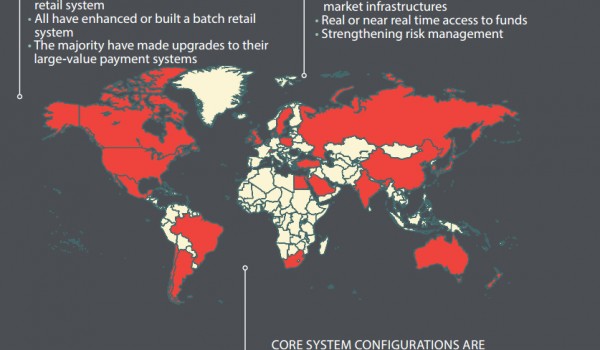Last April, the European Parliament and the Council of the European Union adopted a new Interchange Fee Regulation (IFR) capping interchange fees for payments made with debit and credit cards.
While the main goal is to create a harmonised Europe-wide payments market, this Regulation also aims to help

The impact of the interchange fee regulation: a Processor view
cardholders make informed decisions when it comes to their payment methods. Additionally, it will contribute to cost reductions for consumers and retailers, and encourage competition for a broader availability of payment methods.
This also means that acquirers and issuers will take this opportunity to develop or modify their customer offers by adding attractive value added services. This will, therefore, impact processing as it will need to adapt and support the new fee models and associated business rules and to provide extended offerings with innovative services. Hence all stakeholders and, in particular, the processors will be challenged on their capacities and capabilities to operate with pan-European reach.
In this article, which first appeared in the EPC news letter, Ulrich Engelhart, Worldline’s Head of Payment and Industry Analyst Relations, outlines Worldline’s vision on the long term implications of the IFR for processors.
Impact of the Regulation on processing
Processors provide solutions that are compliant with the supported brands’ scheme rules and that answer their customers’ needs.
The Interchange Fee Regulation (IFR) has an impact on processing, as it will need to adapt and support the fee models and associated business rules. It is expected that some acquirers/issuers will take this opportunity to develop/modify their customer offers by adding attractive value added services, for example.
Schemes will publish adapted scheme rules with updated interchanges according to articles 3 and 4 of the Regulation. Additionally, possible domestic interchanges could add a level of complexity as it is still unclear which Member States will apply them and when that decision will be taken.
Acquirers will probably adapt their commercial offers to their merchant customers; which could also require some adaptation/reconfiguration of the billing components.
Article 8 of the Regulation on co-badging and choice of payment application mainly impacts acceptance processing (e.g. physical point of sale (POS), card not present environment), but not acquiring processing.
The new concept of product type identification (pre-paid, debit, credit, commercial), introduced by article 10, has to be integrated in the card management chain on the issuing processing side (e.g. preparation of card personalisation data), amongst others, in order to ensure information is encoded in new cards. Product identification in environments where the chip on the card is not used (i.e. physical POS not accepting chip cards, card not present environment) could require use of Bank Identification Number (BIN) tables with possible interaction between acceptance environment and acquiring processor.
The requirement, expressed in article 12 of the Regulation, for acquirers to provide merchant customers with detailed transaction information (or aggregated if agreed upon by merchants) on interchange fees may also have an impact on reporting solutions provided by acquiring processors.
Article 7, on the separation of schemes and processing activities, is beneficial to processors as it reinforces principles allowing processors to use alternatives to schemes’ default authorisation, clearing and settlement solutions (e.g. bilateral or intra-processor solutions) and also should prevent schemes from selectively offering better services to parties using their processing infrastructures.
We look forward to the more detailed regulatory standards that the European Banking Authority should publish in the near future on this matter. In this context, as a processor, we also welcome the business principles and requirements defined by the Cards Stakeholders Group (CSG) in Book 7 – Card Processing Framework – applying to all actors of the value chain (e.g. schemes, acquirer/issuers and their processors, specification providers) aiming to further facilitate an open and transparent market, which maintains competition, improves efficiency and fosters interoperability.
The other part of article 7, requiring processors to interconnect with other processors through the use of standards, is more ambiguous. In order to ensure full reachability – acceptance of any card from any issuers – acquirer processors are already connected to solutions ensuring transactions can be exchanged with any issuers of the supported brands.
Long term impact of ongoing self-regulatory activities
Regarding the Single Euro Payments Area (SEPA), important initiatives related to standardisation of SEPA Credit Transfer (SCT) and SEPA Direct Debit (SDD) have taken place. The focus is now more on SEPA for cards. The CSG initiative is focusing on standardisation of card payment transactions. The proposed standardisation and compliance ecosystem will aim at easing the deployment, by specification providers, of generic implementation specifications (e.g. specifications of the protocol between POS and acquirer processor) open to any SEPA scheme (and thus not specific to a certain card brand).
The principle being that the Volume produced by the CSG contains functional and security requirements, that the implementation specifications produced by the specification providers must be compliant with the requirements of the Volume and that the products (terminals, processing solution) developed by vendors (terminal vendors, processors) are compliant with implementation standards. The active involvement of representatives from the entire value chain, such as schemes, payment service providers, processors, vendors and retailers, and the relationship established with the regulatory bodies (European Commission, European Central Bank, Euro Retail Payments Board) should ease the development of more standardised solutions. Convergence towards a reduced set of implementation specifications in the various domains of the value chain will mainly be market driven.
It is already the case, for instance, in the card-terminal domain with the EMV contact specification. It is expected that convergence will also apply in the field of the POS-acquirer domain with initiatives like Nexo (Electronic Protocols Application Software – EPAS protocol) and Acquiris (Common Terminal Acquiring Protocol – CTAP protocol). On the acquirer-issuer side, changes may occur, taking into consideration the evolution of ISO 20022 standard and related initiatives (Acquirer to Issuer Card Messages – ATICA). This evolution will require schemes to adapt their default authorisation, clearing and settlement solutions. This exercise would only make sense if a real alignment happens, rather than the deployment of new ISO 20022 based solutions, each with their own specificities, similar to what happened with ISO 8583. Finally, it is not yet clear if there will be, in the short term, a positive business case for schemes and processors to migrate existing solutions to new ones.
Innovation in payment cards remains important mainly to ensure new user experiences via mobile or remote payments (Host Card Emulation (HCE), wallet, tokenisation…). Of course, innovation cannot be subjected to, or constrained by, standardisation objectives and should be able to be based on new specific technical solutions. Nevertheless, it is expected that, once an innovation becomes mature or has been adopted by several schemes, some standardisation should take place in order to achieve an open and competitive market.
To summarise, processors may expect, in the coming years, some move to a limited set of standard implementation specifications in some domains of the value chain (e.g. POS-acquirer, acquirer-issuer). Nevertheless, processors will continue to support specific implementation specifications, as new innovative services are being introduced and because the above-mentioned evolution is expected to be market driven.
Last but not least, besides the solutions provided by processors, which are aligned to scheme rules for payment card processing, there are also several solutions, independent from scheme rules, which aim to provide additional services to customers (e.g. contract management, invoicing, reporting, servicing, …), therefore, leaving room for differentiation and new specific developments in a competitive environment.
Market evolution
Harmonised fees and, more importantly, the separation between schemes and processing will open the market for issuers and acquirers to select the most suitable processing suppliers in terms of market coverage, functional scope and competitive pricing.
New interparty transaction processing
Processors will offer services to promote European interconnection of different schemes using their knowledge of European standards and their intermediation software as an extension of their functional scopes. This new interparty transaction processing (enriched Automated Clearing House) service will become a true alternative to single branded transaction processing by schemes. It will also empower issuers with loyalty programs and card-linked offers, with high-end data analytics as well as advanced fraud detection services.
Scale matters
At Worldline, we anticipate that profitability from standard card processing services will continue to decrease. This trend can be compensated by increasing transaction volumes, thanks to higher card acceptance and pan-European reach. To stay price competitive in commodity processing, economy of scale is crucial. Processors are forced to operate scalable IT platforms, that can support multiple languages out-of-the-box at a low cost, and to manage fixed operational costs efficiently.
Omni-channel processing
In addition to their traditional card business, processors will have to support alternative and innovative payment instruments, such as Online Banking ePayments or payment wallets, to provide omni-channel ecosystems. With the integration of a global payment platform, clients will benefit from synergies, such as fraud management, authentication, data monetisation, etc. Therefore those processors operating a global infrastructure, which includes a wide range of payment instruments and innovative services for the entire European territory, will be more attractive business partners as they allow their clients to differentiate in the market and to create new revenue streams.
Outsourcing trend
Today, we face a high level of insourcing, with 29 out of the top 40 commercial acquirers1 and around 50 percent of issuing processing still insourced by banks2. Analysing the business case in light of IFR, the financial institutions will be under more and more pressure to divest their payments portfolio processing and outsource it to a well-positioned business partner in Europe.
Consolidation
As the payment market is highly fragmented with more than 50 payment providers and processors, we expect that the current ongoing consolidation trend will be reinforced. Continuous investments in advanced and scalable end-to-end infrastructures, managing fixed operating costs and being present with pan-European reach will lead to new business models and ecosystems resulting in mergers and acquisitions, joint ventures and new partnership models. It can also be expected that some big emerging players, entering the market, may look for cooperation models with established ones to allow smooth transition of the consumer experience. The European processor landscape will change accordingly.
Conclusion
Given the changes described in this article, we believe that this Regulation will not impose important changes in functionalities and services offered by processors, but will impact revenues of most issuers; this will, in return, increase cost pressure on processors. Furthermore, the CSG’s ongoing initiatives should ease the deployment of a certain number of technical standards (e.g. POS to acquirer protocol) opened to several schemes. The adoption of these new standards will be market driven and adopted accordingly by processors. Additionally, the separation of scheme and processing activities will aim to reinforce a fair and competitive market for processors even if competition from schemes will remain challenging. Finally, in this competitive environment and independently of the Regulation, processors will continue to follow market evolutions such as the deployment of new innovative solutions and services, and cost improvements through the increase of operational volumes and consolidation.
Click here to subscribe to the free quarterly EPC newsletter
1 As measured by number of bank transactions. Source: The Nilson report (2013)
2 As measured by revenue. Source: First Annapolis (2013)



